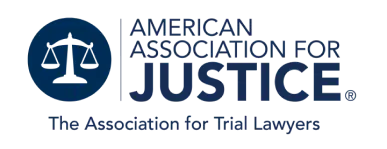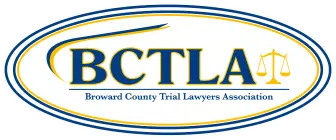
The amount you can get from an underinsured motorist claim in Oregon depends on several factors, such as injury severity, medical costs, lost wages, and the limits of both your and the at-fault driver’s insurance policies. Understanding how much can I get from an underinsured motorist claim in Oregon will help you navigate these factors, see how they influence your claim, and walk you through the process for fair compensation.
Key Takeaways
- Underinsured motorist coverage in Oregon is crucial, providing financial protection when the at-fault driver’s insurance is inadequate, covering medical expenses, lost wages, and pain and suffering.
- The settlement amount from a UIM claim is influenced by factors such as injury severity, medical expenses, loss of income, and the policy limits of both your insurance and the at-fault driver’s insurance.
- Filing a UIM claim involves a structured process that includes reporting the accident, seeking medical attention, exhausting the at-fault driver’s insurance, and potentially negotiating with your insurer for a fair settlement.
Understanding Underinsured Motorist Coverage in Oregon
Underinsured motorist coverage (UIM) provides essential protection when the at-fault driver’s insurance fails to cover your damages. In Oregon, where many drivers carry only the minimum liability coverage of $25,000, UIM coverage becomes even more vital. It provides a financial safety net for serious accidents where the at-fault driver’s insurance falls short.
UIM coverage is a necessary safeguard. Oregon law mandates that all auto insurance policies include uninsured motorist coverage and underinsured motorist coverage, reflecting the state’s commitment to protecting its drivers. UIM coverage offers peace of mind and financial protection in the aftermath of severe accidents.
What Does Underinsured Motorist Coverage Include?
UIM coverage is comprehensive, encompassing a wide range of expenses and damages. When you file an underinsured motorist claim, you can expect compensation for various types of damages, including medical bills, lost wages, and other related costs. It also covers non-economic damages like pain and suffering, emotional distress, and reduced quality of life.
Medical expenses covered under UIM include hospital bills, surgeries, rehabilitation, and ongoing medical care. In addition, UIM compensates for lost income due to an inability to work during recovery. Essentially, UIM coverage aims to cover all aspects of your recovery and ensure you’re not financially burdened due to someone else’s insufficient insurance.
Why You Need Underinsured Motorist Coverage
UIM coverage provides a vital financial safety net when the at-fault driver’s insurance falls short. In serious accidents, medical bills and other expenses can quickly exceed the at-fault driver’s minimum liability coverage.
UIM coverage also applies in hit-and-run accidents if the at-fault driver is identified and insured. Without UIM, you could be left facing significant out-of-pocket expenses, stressing the importance of having this coverage as part of your auto insurance policy.
Factors Influencing Your Underinsured Motorist Claim Amount
Several factors influence the amount you receive from a UIM claim, such as the severity of injuries, medical expenses, lost wages, pain and suffering, and the policy limits of both your insurance and the at-fault driver’s insurance.
Grasping these factors can help you navigate your claim effectively and secure fair compensation.
Severity of Injuries
The severity of injuries significantly influences the settlement amount for your UIM claim. More severe injuries typically lead to higher settlements due to the extensive medical care required. Serious injury claims can involve tens of thousands or over $100,000 in medical expenses.
Minor injuries, such as soft tissue damage or minor whiplash, generally result in smaller compensation amounts. This is in contrast to more severe injuries, which often result in higher payouts. The more severe your injuries, the more your UIM coverage will need to compensate for the differences between the at-fault driver’s insurance and your actual damages.
Medical Expenses and Future Treatment Costs
Medical expenses and future treatment costs significantly impact your UIM claim amount. These costs encompass hospital bills, surgeries, rehabilitation, and ongoing medical care. Long-term treatment needs can substantially affect your settlement.
Health plans might seek reimbursement if accident-related medical costs surpass insurance coverage or personal injury protection coverage.
Lost Wages and Loss of Earning Capacity
Lost wages and loss of earning capacity are essential components of a UIM claim. Injuries from a car accident can temporarily or permanently impact your income. Calculating lost wages involves assessing your pre-accident earning potential and determining the financial impact of your injuries.
Personal injury protection covers lost income if you are disabled for at least fourteen consecutive days. This coverage compensates for income loss due to your inability to work, providing a financial buffer during recovery.
Pain and Suffering Damages
Pain and suffering damages significantly impact UIM claims, often increasing overall compensation. Insurance companies use multipliers, determined by injury severity, to assess damages. More severe and disruptive injuries result in higher compensation for pain and suffering.
Additional medical documentation or expert testimony may be needed to justify your UIM claim value during negotiations. This helps ensure fair compensation for the pain and suffering endured.
Policy Limits and At-Fault Driver’s Insurance
Policy limits and the at-fault driver’s insurance heavily influence your UIM claim. Your claim amount depends on your UIM policy limits and the actual damages incurred. If the at-fault driver’s insurance is insufficient, your UIM coverage applies to the remaining amount, up to your policy limit.
To maximize your UIM claim, confirm the at-fault driver’s insurance limits and coverage details. This provides a clear understanding of available compensation and helps navigate your claim effectively.
Let's Settle For More... Get Your FREE Case Review Today.
Let's Settle For More... Get Your FREE Case Review Today.
Filing an Underinsured Motorist Claim in Oregon
Filing a UIM claim in Oregon involves meeting specific conditions and following a structured process. First, report the accident to law enforcement and seek prompt medical attention. This creates an official accident record, essential for your claim.
You can file a UIM claim even with partial fault. UIM coverage may also cover funeral costs in fatal accidents. Following these steps ensures smooth processing and fair compensation.
Reporting the Accident
Promptly contacting law enforcement after an accident is vital for creating an official record. The police report serves as critical evidence in your UIM claim, documenting accident details and the at-fault driver’s liability.
Ensure all relevant information is accurately recorded to support your claim.
Seeking Medical Attention
Immediate medical attention after an accident is crucial for both recovery and your UIM claim. Prompt medical care documents injuries sustained in the accident, essential for your claim. UIM claims cover both past and future medical expenses, including hospital bills, surgeries, physical therapy, and pain management.
Injuries leading to permanent disability or long recovery times typically result in higher payout amounts. Therefore, it’s important to follow through with all recommended medical treatments and keep detailed records of your medical expenses and treatments.
Contacting Your Insurance Company
Notify your insurance company promptly when filing a UIM claim. Most insurance policies have deadlines for claim initiation, so contact your insurer as soon as possible after the accident. An AI claims helper can assist in gathering medical records, calculating damages, and communicating with the insurer.
Providing accurate and detailed information during initial contact can streamline the claims process and ensure efficient handling. Keep a record of all communications with your insurance company.
Exhausting the At-Fault Driver’s Insurance
You must first exhaust the at-fault driver’s insurance before filing a UIM claim. This involves proving that the at-fault driver’s liability coverage is insufficient to cover your damages. Securing confirmation from the at-fault driver’s insurance provider is necessary to proceed with your UIM claim.
This step ensures that all available resources are utilized before accessing your UIM coverage, maximizing your compensation. Make sure to keep detailed records of all interactions and confirmations from the at-fault driver’s insurance company.
Negotiating with Your Insurance Company
Negotiation with your insurance company is crucial for securing a fair settlement for your UIM claim. Insurers often offer low initial settlements, so be prepared to negotiate. Stay calm and gather witness information, take photos, call the police, and contact your insurance provider immediately.
Medical documentation can bolster your position during negotiations. After submitting documentation, the insurer will evaluate the claim and may initiate negotiations. Being well-prepared and persistent can help achieve a fair settlement.
Legal Considerations in Underinsured Motorist Claims
Legal considerations play a significant role in UIM claims. Your insurance company may challenge your claim, so understanding your rights and the legal aspects is essential. In Oregon, being more than 50% at fault can bar you from recovering any compensation due to modified comparative negligence rules.
Navigating these legal complexities can be challenging, but knowing when to seek legal assistance and understanding your options, like arbitration vs. lawsuits, can significantly affect your claim outcome.
When to Hire ELG Injury Law
An experienced personal injury claim attorney can help with disputes over liability, coverage, or inadequate settlement offers. ELG Injury Law can assist in navigating coverage issues, identifying other parties with UIM coverage, and protecting your rights during the personal injury claims process.
Consider hiring ELG Injury Law if your insurer offers an unfair settlement. An attorney can review settlements, negotiate better terms, and improve your chances of a favorable outcome.
Arbitration vs. Lawsuits
If your claim is denied, you can appeal through arbitration or file a lawsuit. Arbitration is generally more cost-effective and quicker. In arbitration, exhibits and witness testimony are considered as evidence, and parties select arbitrators who recommend a third arbitrator.
Choosing arbitration or a lawsuit depends on your specific situation and claim complexity. Consulting an experienced personal injury attorney can help determine the best course of action.
Impact on Insurance Rates
Filing a UIM claim can potentially affect your insurance premiums, depending on your insurer’s policies. While most insurers do not raise premiums after a UIM claim, some may adjust rates based on individual circumstances. Factors like accident severity and driver history can influence premium adjustments.
Discuss these potential impacts with your insurance provider to understand the consequences of filing a UIM claim.
Let's Settle For More... Get Your FREE Case Review Today.
Let's Settle For More... Get Your FREE Case Review Today.
Common Issues and How to Overcome Them
Common issues in underinsured motorist claims include proving liability, the extent of damage, and establishing the connection between the accident and the harm suffered. Hit-and-run accidents and an uninsured driver can complicate claims further. Gathering thorough evidence and understanding legal aspects are vital for overcoming these challenges and ensuring a successful uninsured motorist claim.
Legal representation can also be crucial when navigating disputes related to policy limits or when insurers deny claims.
Proving Liability and Damages
Proving liability and damages is critical for the success of your underinsured motorist claim. Collecting comprehensive evidence such as medical documentation, police reports, and witness testimonies can bolster your claim. Insurance companies may contest UIM claims, complicating the recovery process. Ensuring you have all necessary documentation and evidence can help mitigate these challenges.
In cases of partial fault, compensation may be adjusted according to the percentage of liability attributed to you. Working with an experienced personal injury attorney can help you navigate these complexities and ensure you receive fair compensation for your damages.
Set-Offs and Credits
Understanding set-offs and credits in underinsured motorist claims is essential for maximizing your compensation. Set-offs refer to reductions in payouts due to compensation received for damages from another source. Claims can face reductions in payouts, accounting for any compensation already received for damages.
Recovery made at trial or arbitration may lead to offsets or reductions in the payout received from a UIM claim. Being aware of these potential reductions and negotiating effectively can help you achieve the best possible outcome for your claim.
Health Insurance Reimbursement
Health insurance reimbursement is a critical consideration in UIM claims, as health plans may seek reimbursement from settlements. Careful attention to reimbursement rules is required to ensure fair compensation. Private health plans typically become involved in UIM claims when serious injuries exceed limited personal injury protection coverage.
Discussing these aspects with your insurance provider and legal advisor can help you navigate the reimbursement process and ensure that you receive the compensation you deserve without unexpected deductions.
Frequently Asked Questions
Can I file an underinsured motorist claim if I am partially at fault?
You can file an underinsured motorist claim even if you are partially at fault; however, compensation may be reduced according to your percentage of fault.
What types of damages are covered under UIM?
Underinsured motorist (UIM) coverage typically includes compensation for medical bills, lost wages, pain and suffering, and other related expenses. It ensures that you are financially protected in the event of an accident caused by a driver with insufficient insurance.
How does the severity of my injuries affect my UIM claim?
The severity of your injuries significantly impacts your UIM claim, as more severe injuries generally result in higher settlements due to increased medical expenses and greater effects on your daily life. Therefore, it is crucial to accurately document your injuries and their consequences.
Will filing a UIM claim increase my insurance premiums?
Filing a UIM claim may lead to an increase in your insurance premiums, as this often depends on your insurer’s policies and the specific details of your claim. It is advised to review your policy for potential impacts on rates.
When should I consider hiring an attorney for my UIM claim?
You should consider hiring an attorney for your UIM claim if you encounter disputes regarding liability, coverage, or if you receive inadequate settlement offers. An experienced personal injury attorney can help you navigate these challenges and ensure you receive fair compensation.
Last updated Monday, June 2nd, 2025








